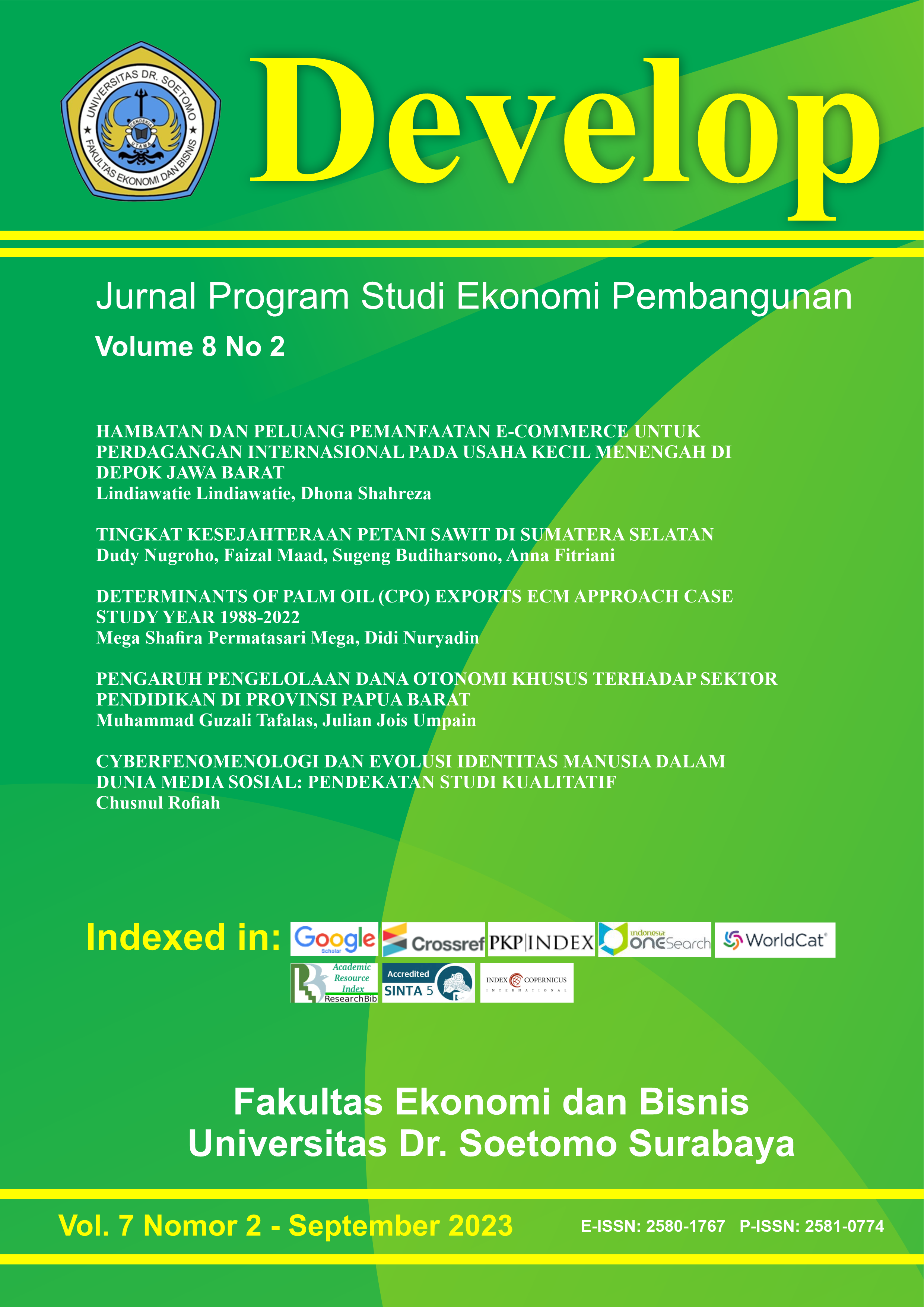Cyberfenomenologi dan Evolusi Identitas Manusia Dalam Dunia Media Sosial: Pendekatan Studi Kualitatif
 Abstract views: 277
,
Abstract views: 277
,
 PDF Journal downloads: 205
PDF Journal downloads: 205
Abstract
This research explores users' subjective experiences in cyberspace through a cyberphenomenology approach, focusing on privacy, digital identity, and social interactions on social media. Using qualitative methods, data was collected through in-depth interviews and participant observation. Thematic analysis was applied to identify main themes related to freedom in building digital identities, concerns about the security of personal data, and the influence of social interactions on privacy behavior.
This article also summarizes cyber phenomenology-based qualitative research procedures to serve as a guide for other researchers. The coding process was carried out using the color coding method, where each main theme is given a special color to facilitate grouping and manual analysis. The themes identified included flexibility in expressing digital identity, uncertainty regarding the use of personal data, and social pressure to share information.
Findings show that many users feel freer in building their online identities, but face privacy risks due to a lack of digital literacy. Suggestions for digital platforms include providing more transparent privacy features and digital literacy education. Stricter privacy regulations are also needed to protect users in the digital era.
This research provides important insights into the evolution of digital identity and the challenges faced in maintaining privacy on social media.
References
Ferreira, C., Rodrigues, J., & Silva, M. (2022). The Economic Impact of Social Media Influencers. *Journal of New Media Studies*, 9(2), 102-121.
Gros, D. (2023). Cyberphenomenology: A New Approach to Understanding Human Experience in the Digital World. *Cybernetics and Human Knowing*, 30(1), 45-65.
Hogan, B. (2021). Social Media and Identity: Navigating Online Representations. *Journal of Digital Identity*, 8(4), 321-335.
Kaplan, A. M., & Haenlein, M. (2022). Users of the World, Unite! The Challenges of Social Media. *Business Horizons*, 65(2), 199-210.
Koc-Michalska, K., & Lilleker, D. G. (2023). The Politics of Digital Identity: Social Media and Public Perception. *Political Communication*, 40(1), 88-105.
Niederhoffer, K., Del Vecchio, D., & Carter, S. (2023). Unlocking Success on Social Media: Practical Guidelines for Content Creators. *Journal of Digital Marketing*, 19(1), 55-73.
Reyes-Menendez, A., Saura, J. R., & Alvarez-Alonso, C. (2021). Digital Life as a New Dimension: Social Media and Personal Success. *Digital Transformation Review*, 12(4), 98-115.
Schweiger, G., Böhm, S., & Zimmermann, F. (2023). Personal Branding and Success in the Digital Era: A Case Study of Influencers. *Journal of Social Media Studies*, 18(2), 87-102.
Sun, H., & Wang, Z. (2022). The Influence of Social Media Algorithms on Content Visibility. *Information and Society*, 11(1), 123-140.
Valkenburg, P. M., Piotrowski, J. T., & Hermans, J. R. (2022). Social Media and Adolescent Mental Health: An Overview of Recent Findings. *Current Directions in Psychological Science*, 31(6), 568-575.
Verduyn, P., Ybarra, O., & Jonides, J. (2021). Social Media’s Impact on Well-Being: Distinguishing Active From Passive Use. *Journal of Experimental Psychology: General*, 150(10), 1911-1923.
Wirtz, J., So, K. K. F., & Mody, M. A. (2021). Platforms, Influencers, and E-Commerce: The Economic Impact of Social Media. *Journal of Business Research*, 131(5), 109-122.
Xie, X., Li, M., & Peng, J. (2023). Monetizing Popularity: Influencers' Economic Power in the Digital Economy. *Journal of Interactive Marketing*, 31(3), 103-125.
CC BY 4.0 Creative Commons Attribution 4.0 International. This license requires that reusers give credit to the creator. It allows reusers to distribute, remix, adapt, and build upon the material in any medium or format, even for commercial purposes.
BY: Credit must be given to you, the creator.



2.png)






